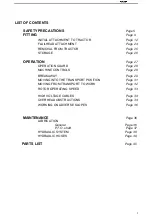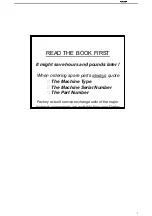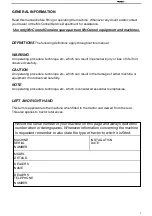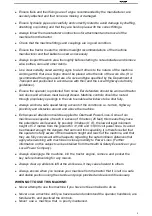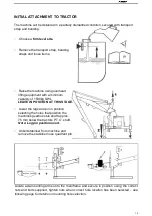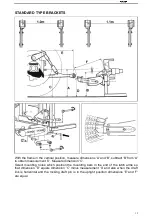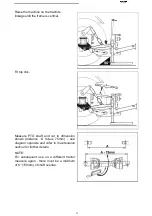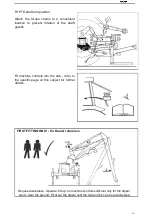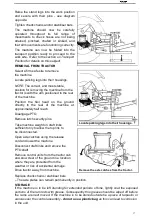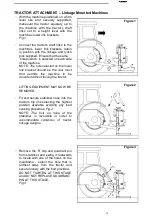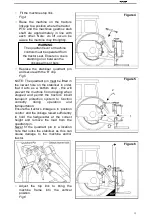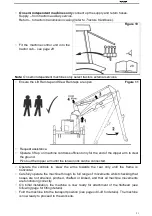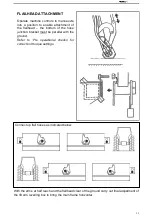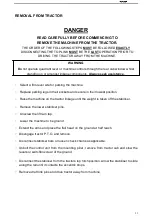
8
●
Ensure flails and their fixings are of a type recommended by the manufacturer, are
securely attached and that none are missing or damaged.
●
Ensure hydraulic pipes are carefully and correctly routed to avoid damage by chaffing,
stretching or pinching and that they are held in place with the correct fittings.
●
Always follow the manufacturer’s instructions for attachment and removal of the
machine from the tractor.
●
Check that the machine fittings and couplings are in good condition.
●
Ensure the tractor meets the minimum weight recommendations of the machine
manufacturer and that ballast is used as necessary.
●
Always inspect the work area thoroughly before starting to note obstacles and remove
wire, bottles, cans and other debris.
●
Use clear suitably sized warning signs to alert others to the nature of the machine
working within that area. Signs should be placed at both ends of the work site. (It is
recommended that signs used are of a size and type specified by the Department of
Transport and positioned in accordance with their and the Local Highways Authority
guidelines).
●
Ensure the operator is protected from noise. Ear defenders should be worn and tractor
cab doors and windows must be kept closed. Machine controls should be routed
through proprietary openings in the cab to enable all windows to be shut fully.
●
Always work at a safe speed taking account of the conditions i.e.: terrain, highway
proximity and obstacles around and above the machine.
●
Extra special attention should be applied to Overhead Power Lines. Some of our
machines are capable of reach in excess of 8 metres (26 feet) this means they have
the potential to well exceed, by possibly 3 metres (9’ 9”), the lowest legal minimum
height of 5.2 metres from the ground for 11,000 and 33,000 volt power lines. It cannot
be stressed enough the dangers that surround this capability, it is therefore vital that
the operator is fully aware of the maximum height and reach of the machine, and that
they are fully conversant with all aspects regarding the safe minimum distances that
apply when working with machines in close proximity to Power Lines. (Further
information on this subject can be obtained from the Health & Safety Executive or your
Local Power Company).
●
Always disengage the machine, kill the tractor engine, remove and pocket the
key before dismounting for any reason.
●
Always clear up all debris left at the work area, it may cause hazard to others.
●
Always ensure when you remove your machine from the tractor that it is left in a safe
and stable position using the stands and props provided and secured if necessary.
WHEN NOT TO USE THIS MACHINE:
●
Never attempt to use this machine if you have not been trained to do so.
●
Never uses a machine until you have read and understood the operator handbook, are
familiar with, and practiced the controls.
●
Never use a machine that is poorly
maintained.


